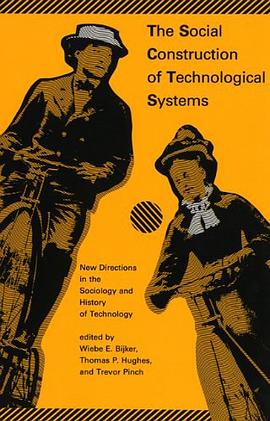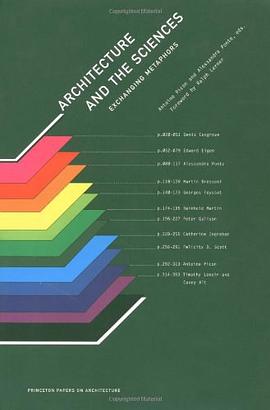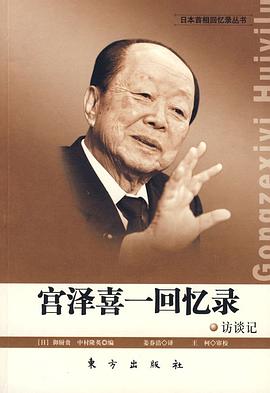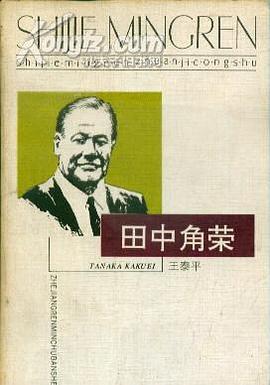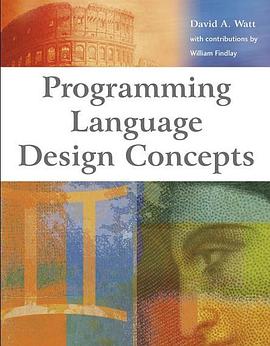
Bookmarks
Programming Language Design Concepts
Cover
Contents
Preface
Part I: Introduction
1 Programming languages
1.1 Programming linguistics
1.1.1 Concepts and paradigms
1.1.2 Syntax, semantics, and pragmatics
1.1.3 Language processors
1.2 Historical development
Summary
Further reading
Exercises
Part II: Basic Concepts
2 Values and types
2.1 Types
2.2 Primitive types
2.2.1 Built-in primitive types
2.2.2 Defined primitive types
2.2.3 Discrete primitive types
2.3 Composite types
2.3.1 Cartesian products, structures, and records
2.3.2 Mappings, arrays, and functions
2.3.3 Disjoint unions, discriminated records, and objects
2.4 Recursive types
2.4.1 Lists
2.4.2 Strings
2.4.3 Recursive types in general
2.5 Type systems
2.5.1 Static vs dynamic typing
2.5.2 Type equivalence
2.5.3 The Type Completeness Principle
2.6 Expressions
2.6.1 Literals
2.6.2 Constructions
2.6.3 Function calls
2.6.4 Conditional expressions
2.6.5 Iterative expressions
2.6.6 Constant and variable accesses
2.7 Implementation notes
2.7.1 Representation of primitive types
2.7.2 Representation of Cartesian products
2.7.3 Representation of arrays
2.7.4 Representation of disjoint unions
2.7.5 Representation of recursive types
Summary
Further reading
Exercises
3 Variables and storage
3.1 Variables and storage
3.2 Simple variables
3.3 Composite variables
3.3.1 Total vs selective update
3.3.2 Static vs dynamic vs flexible arrays
3.4 Copy semantics vs reference semantics
3.5 Lifetime
3.5.1 Global and local variables
3.5.2 Heap variables
3.5.3 Persistent variables
3.6 Pointers
3.6.1 Pointers and recursive types
3.6.2 Dangling pointers
3.7 Commands
3.7.1 Skips
3.7.2 Assignments
3.7.3 Proper procedure calls
3.7.4 Sequential commands
3.7.5 Collateral commands
3.7.6 Conditional commands
3.7.7 Iterative commands
3.8 Expressions with side effects
3.8.1 Command expressions
3.8.2 Expression-oriented languages
3.9 Implementation notes
3.9.1 Storage for global and local variables
3.9.2 Storage for heap variables
3.9.3 Representation of dynamic and flexible arrays
Summary
Further reading
Exercises
4 Bindings and scope
4.1 Bindings and environments
4.2 Scope
4.2.1 Block structure
4.2.2 Scope and visibility
4.2.3 Static vs dynamic scoping
4.3 Declarations
4.3.1 Type declarations
4.3.2 Constant declarations
4.3.3 Variable declarations
4.3.4 Procedure definitions
4.3.5 Collateral declarations
4.3.6 Sequential declarations
4.3.7 Recursive declarations
4.3.8 Scopes of declarations
4.4 Blocks
4.4.1 Block commands
4.4.2 Block expressions
4.4.3 The Qualification Principle
Summary
Further reading
Exercises
5 Procedural abstraction
5.1 Function procedures and proper procedures
5.1.1 Function procedures
5.1.2 Proper procedures
5.1.3 The Abstraction Principle
5.2 Parameters and arguments
5.2.1 Copy parameter mechanisms
5.2.2 Reference parameter mechanisms
5.2.3 The Correspondence Principle
5.3 Implementation notes
5.3.1 Implementation of procedure calls
5.3.2 Implementation of parameter mechanisms
Summary
Further reading
Exercises
Part III: Advanced Concepts
6 Data abstraction
6.1 Program units, packages, and encapsulation
6.1.1 Packages
6.1.2 Encapsulation
6.2 Abstract types
6.3 Objects and classes
6.3.1 Classes
6.3.2 Subclasses and inheritance
6.3.3 Abstract classes
6.3.4 Single vs multiple inheritance
6.3.5 Interfaces
6.4 Implementation notes
6.4.1 Representation of objects
6.4.2 Implementation of method calls
Summary
Further reading
Exercises
7 Generic abstraction
7.1 Generic units and instantiation
7.1.1 Generic packages in ADA
7.1.2 Generic classes in C++
7.2 Type and class parameters
7.2.1 Type parameters in ADA
7.2.2 Type parameters in C++
7.2.3 Class parameters in JAVA
7.3 Implementation notes
7.3.1 Implementation of ADA generic units
7.3.2 Implementation of C++ generic units
7.3.3 Implementation of JAVA generic units
Summary
Further reading
Exercises
8 Type systems
8.1 Inclusion polymorphism
8.1.1 Types and subtypes
8.1.2 Classes and subclasses
8.2 Parametric polymorphism
8.2.1 Polymorphic procedures
8.2.2 Parameterized types
8.2.3 Type inference
8.3 Overloading
8.4 Type conversions
8.5 Implementation notes
8.5.1 Implementation of parametric polymorphism
Summary
Further reading
Exercises
9 Control flow
9.1 Sequencers
9.2 Jumps
9.3 Escapes
9.4 Exceptions
9.5 Implementation notes
9.5.1 Implementation of jumps and escapes
9.5.2 Implementation of exceptions
Summary
Further reading
Exercises
10 Concurrency
10.1 Why concurrency?
10.2 Programs and processes
10.3 Problems with concurrency
10.3.1 Nondeterminism
10.3.2 Speed dependence
10.3.3 Deadlock
10.3.4 Starvation
10.4 Process interactions
10.4.1 Independent processes
10.4.2 Competing processes
10.4.3 Communicating processes
10.5 Concurrency primitives
10.5.1 Process creation and control
10.5.2 Interrupts
10.5.3 Spin locks and wait-free algorithms
10.5.4 Events
10.5.5 Semaphores
10.5.6 Messages
10.5.7 Remote procedure calls
10.6 Concurrent control abstractions
10.6.1 Conditional critical regions
10.6.2 Monitors
10.6.3 Rendezvous
Summary
Further reading
Exercises
Part IV: Paradigms
11 Imperative programming
11.1 Key concepts
11.2 Pragmatics
11.2.1 A simple spellchecker
11.3 Case study: C
11.3.1 Values and types
11.3.2 Variables, storage, and control
11.3.3 Bindings and scope
11.3.4 Procedural abstraction
11.3.5 Independent compilation
11.3.6 Preprocessor directives
11.3.7 Function library
11.3.8 A simple spellchecker
11.4 Case study: ADA
11.4.1 Values and types
11.4.2 Variables, storage, and control
11.4.3 Bindings and scope
11.4.4 Procedural abstraction
11.4.5 Data abstraction
11.4.6 Generic abstraction
11.4.7 Separate compilation
11.4.8 Package library
11.4.9 A simple spellchecker
Summary
Further reading
Exercises
12 Object-oriented programming
12.1 Key concepts
12.2 Pragmatics
12.3 Case study: C++
12.3.1 Values and types
12.3.2 Variables, storage, and control
12.3.3 Bindings and scope
12.3.4 Procedural abstraction
12.3.5 Data abstraction
12.3.6 Generic abstraction
12.3.7 Independent compilation and preprocessor directives
12.3.8 Class and template library
12.3.9 A simple spellchecker
12.4 Case study: JAVA
12.4.1 Values and types
12.4.2 Variables, storage, and control
12.4.3 Bindings and scope
12.4.4 Procedural abstraction
12.4.5 Data abstraction
12.4.6 Generic abstraction
12.4.7 Separate compilation and dynamic linking
12.4.8 Class library
12.4.9 A simple spellchecker
12.5 Case study: ADA95
12.5.1 Types
12.5.2 Data abstraction
Summary
Further reading
Exercises
13 Concurrent programming
13.1 Key concepts
13.2 Pragmatics
13.3 Case study: ADA95
13.3.1 Process creation and termination
13.3.2 Mutual exclusion
13.3.3 Admission control
13.3.4 Scheduling away deadlock
13.4 Case study: JAVA
13.4.1 Process creation and termination
13.4.2 Mutual exclusion
13.4.3 Admission control
13.5 Implementation notes
Summary
Further reading
Exercises
14 Functional programming
14.1 Key concepts
14.1.1 Eager vs normal-order vs lazy evaluation
14.2 Pragmatics
14.3 Case study: HASKELL
14.3.1 Values and types
14.3.2 Bindings and scope
14.3.3 Procedural abstraction
14.3.4 Lazy evaluation
14.3.5 Data abstraction
14.3.6 Generic abstraction
14.3.7 Modeling state
14.3.8 A simple spellchecker
Summary
Further reading
Exercises
15 Logic programming
15.1 Key concepts
15.2 Pragmatics
15.3 Case study: PROLOG
15.3.1 Values, variables, and terms
15.3.2 Assertions and clauses
15.3.3 Relations
15.3.4 The closed-world assumption
15.3.5 Bindings and scope
15.3.6 Control
15.3.7 Input/output
15.3.8 A simple spellchecker
Summary
Further reading
Exercises
16 Scripting
16.1 Pragmatics
16.2 Key concepts
16.2.1 Regular expressions
16.3 Case study: PYTHON
16.3.1 Values and types
16.3.2 Variables, storage, and control
16.3.3 Bindings and scope
16.3.4 Procedural abstraction
16.3.5 Data abstraction
16.3.6 Separate compilation
16.3.7 Module library
Summary
Further reading
Exercises
Part V: Conclusion
17 Language selection
17.1 Criteria
17.2 Evaluation
Summary
Exercises
18 Language design
18.1 Selection of concepts
18.2 Regularity
18.3 Simplicity
18.4 Efficiency
18.5 Syntax
18.6 Language life cycles
18.7 The future
Summary
Further reading
Exercises
Bibliography
Glossary
Index
Team DDU
具體描述
讀後感
評分
評分
評分
評分
用戶評價
相關圖書
本站所有內容均為互聯網搜索引擎提供的公開搜索信息,本站不存儲任何數據與內容,任何內容與數據均與本站無關,如有需要請聯繫相關搜索引擎包括但不限於百度,google,bing,sogou 等
© 2025 qciss.net All Rights Reserved. 小哈圖書下載中心 版权所有





